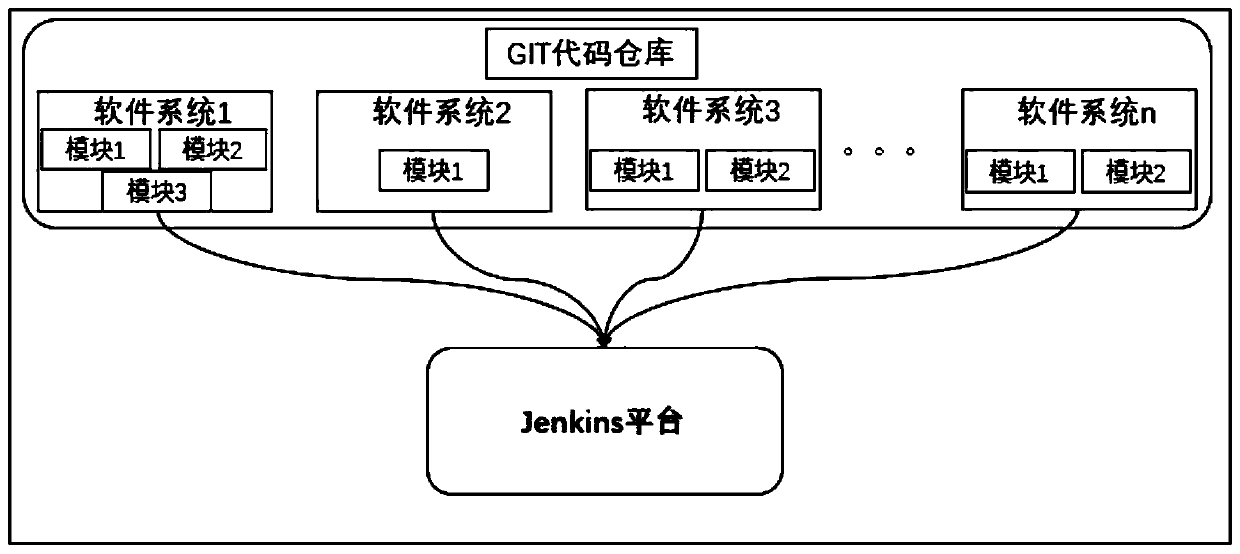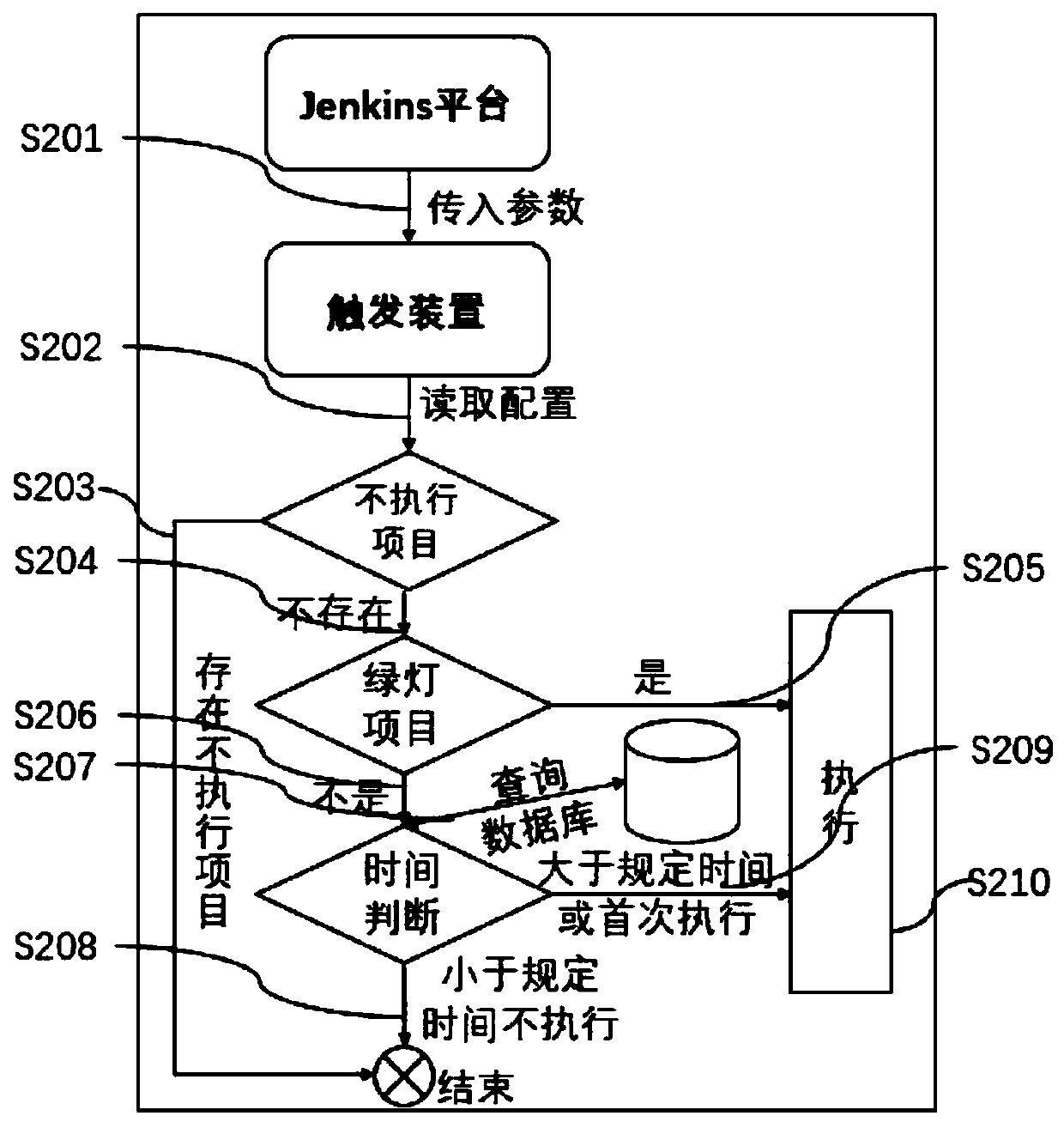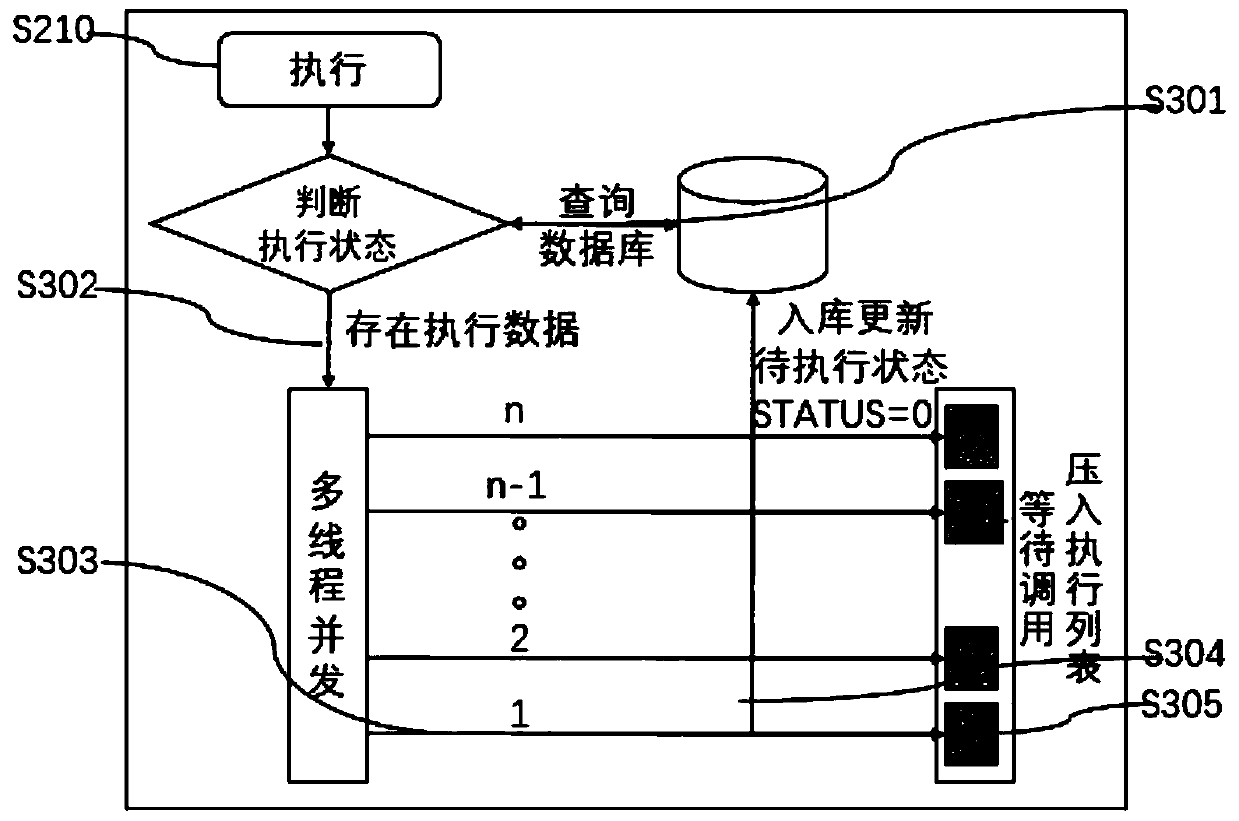Efficient multi-system test code coverage rate management method
A technology of code coverage and test code, applied in the field of computer information processing, can solve problems such as inflexibility, occupying version process, narrow focus, etc., and achieve the effect of flexible and controllable data acquisition
- Summary
- Abstract
- Description
- Claims
- Application Information
AI Technical Summary
Problems solved by technology
Method used
Image
Examples
Embodiment 1
[0057] Such as figure 1 As shown, this embodiment provides an efficient multi-system test code coverage management method, including the following steps:
[0058] Step 1: The developer submits the code to the GIT code repository to trigger the Jenkins build task. For large-scale commercial software, there will be many software systems, and each software system may have multiple modules, which are usually developed in parallel.
[0059] Step 2: When triggering the Jenkins build task, analyze and record the basic information of each software system. For example: project name, code branch, version number of code submission, etc.
[0060] Step 3: Through the information recorded in step 2, use the curl command to call the service trigger device provided externally to obtain the unit test code coverage.
[0061] Step 4: Step S201 collects parameters when building a task through Jenkins and transmits the parameters to the trigger device. Since it is an asynchronous operation, aft...
Embodiment 2
[0074] refer to figure 1 , embodiment 2 is an implementation of functional testing or automated testing to obtain code coverage, wherein the implementation process of functional testing and automated testing is consistent, but there is a difference in time when the trigger is invoked, so the two processes are merged into One.
[0075] Step 1: The actual deployment process.
[0076] Step 2: Before deploying the software, it is necessary to trigger the trigger and make the actual call. Since it is implemented in an asynchronous manner, Jenkins can handle other affairs by itself without occupying Jenkins resources.
[0077] Step 3: If Figure 5 Step S501, through the parameters received by the trigger device, firstly detect whether the TOMCAT process on the server exists, but if it does not exist, execute step S502, the program executes the replacement port.
[0078] Step 4: Execute to step S503, check whether there is a jacocoagent process, if not, execute step S504, and exec...
PUM
 Login to View More
Login to View More Abstract
Description
Claims
Application Information
 Login to View More
Login to View More - R&D
- Intellectual Property
- Life Sciences
- Materials
- Tech Scout
- Unparalleled Data Quality
- Higher Quality Content
- 60% Fewer Hallucinations
Browse by: Latest US Patents, China's latest patents, Technical Efficacy Thesaurus, Application Domain, Technology Topic, Popular Technical Reports.
© 2025 PatSnap. All rights reserved.Legal|Privacy policy|Modern Slavery Act Transparency Statement|Sitemap|About US| Contact US: help@patsnap.com



